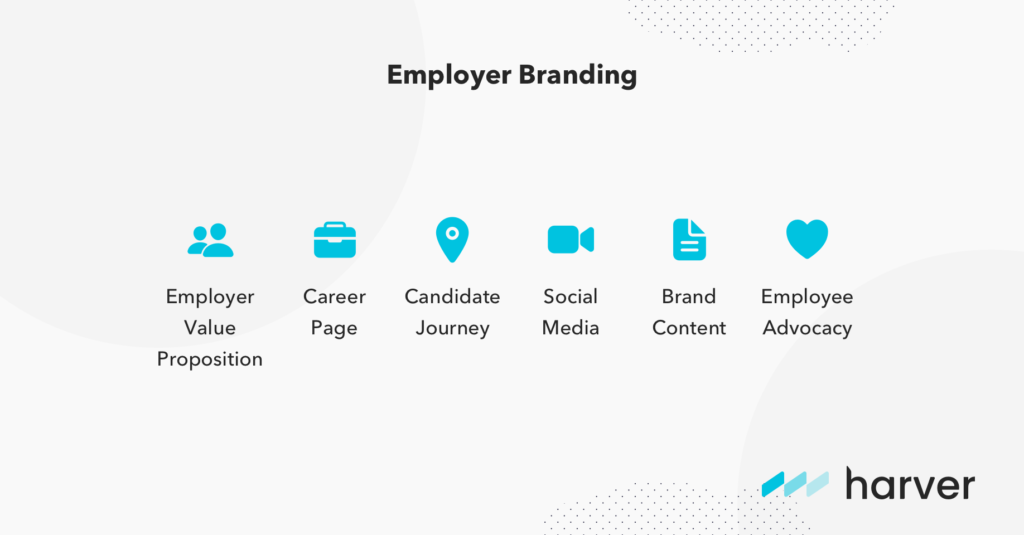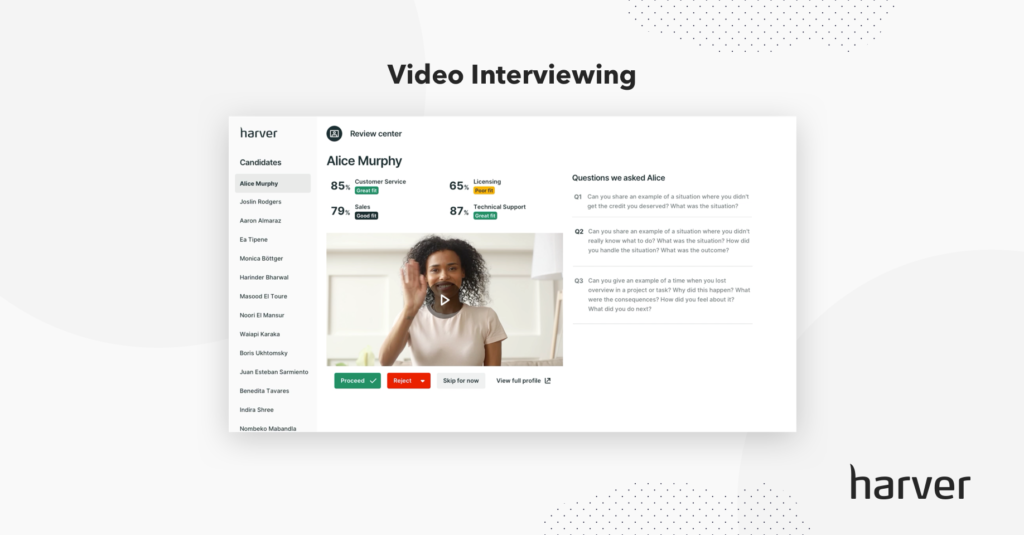Securing top talent is hard enough in an increasingly competitive labor market, but it’s especially true for the healthcare industry facing an ongoing global pandemic—last year was only the beginning. Finding skilled, passionate, and quality candidates at volume is akin to finding gold at the end of the rainbow, or at least, that’s how it can feel.
To counter this, healthcare organizations need to be open to new and ever-evolving recruitment strategies. One of the most successful tactics is to build, enhance, and nurture your employer brand. Doing so will attract job seekers, help to fix staffing issues, and boost retention.
But how do you make your employer brand stand out from the competition?
What's in?
Like what you see?
Don’t miss out. Subscribe to our quarterly digest to get the latest TA and TM resources delivered right to your inbox.
Why volume hiring in healthcare is different
Before we look at employer branding, it’s important to understand why volume hiring in healthcare is different, and ultimately, more challenging. With healthcare volume hiring, you’re going to be looking for candidates with a diverse set of skills and broad-ranging backgrounds, particularly when recruiting for different roles.
For instance, hospital cleaning staff don’t need special qualifications, but there are other roles—like nurses—where this becomes essential. A nurse alone will require specific qualifications, knowledge, and skills to perform well in the role. It’s a different proposition to retail, where job candidates don’t typically need industry-specific experience or knowledge.
What’s more, in the healthcare industry, the candidate pool can be very small or much larger, but this depends on the location. In other words: if you’re trying to volume hire in a tight market where a shortage of candidates is common, you need to do everything you can to stand out.
Your employer brand is crucial, along with marketing campaigns and ads that bring job seekers to you. Showcasing your core values is the aim of the day, as we’ll see later.
Speed is critical too, and ideally, you need a process that allows you to assess candidate skills and move the best people to the interview phase as fast as possible. Automation is of great use here, allowing you to remove the need for slow, inefficient real-time input and instead automate the key stages of the hiring process to keep things moving.
If the candidate pool is small—and this is often true—you’ll likely want to give all of your candidates an excellent chance to succeed; simply put, you’ll need as many of them as possible.
Having the ability to assess their general skills and characteristics rather than just their role-specific ones is a smart option because it allows you to see whether they would fit other roles and if they have transferable skills. After all, the last thing healthcare employers want is to go through the process only to come out empty-handed.
What is Employer Branding?
So what is employer branding, and why is it significant anyway? In a nutshell: the employer brand is what job seekers and your customers use to understand your organization. It attracts people and keeps them loyal, hopefully for many years to come.
Employer branding represents the ethos, the company culture, the value proposition, and the qualities that make a business attractive. It’s your social media presence, your job descriptions, and your communication efforts—your current employees help shape this image to outsiders too. It’s fair to say what sparks your employer brand to life can, to some degree, be intangible and unsaid, and that’s why so many employers find it difficult to crack.

A strong employer brand gives off the impression to potential employees that not only is your company a great place to work but that they will also flourish there—it’s the place they need to be, above all else. A convincing employer brand will bring the best potential candidates straight to you, and a poor one will drive them away. In fact, 55% of recruitment leaders worldwide have a proactive employer brand strategy.
Healthcare systems need to have a compelling employer brand because they confront a unique set of challenges when sourcing top talent, including the changing requirements for each role and other prevailing talent management problems.
First and foremost, passionate healthcare workers keep an organization alive and well; great healthcare providers realize this. These workers believe in the brand, feel like they are respected, see clear career progression, and, in return, want to do their best to look after and care for others.
When you get this part right, everyone wins.
Making your employer brand stand out in healthcare
Without further ado, here are five ideas to help make your employer brand stand out in the demanding world of healthcare recruitment marketing.
Showcase your brand during the application process
All too often, potential employees get greeted by dull and lifeless forms to fill in that don’t showcase the organization they’re applying to in any tangible form. The result? A feeling of disinterest from the start when, in reality, this is your greatest chance to show them what it’s like to work for you, the perks, and why they should be excited.
For example, Albert Heijn, the biggest supermarket chain in the Netherlands, uses a Harver-powered entry point for job seekers during their application process. Candidates apply directly from their phones, making it easier than ever. They fill in their details, see what a “day in the life” of working for the company is like, and then apply to multiple locations at once.
Ready to transform your hiring process?
Candidates get to view the different roles available and learn about them via branded videos and realistic job previews used throughout the application process. This approach creates the impression that the company is fun, efficient, and inspiring—it’s the sort of place you would want to work. It also allows things to move along a bit quicker, as candidates both apply and receive information in one go.
The healthcare professionals of tomorrow will expect the same in your application process, so be sure to think carefully about what they’ll see.
Offer realistic job previews
Offering realistic job previews (RJPs) is critical in managing candidates’ expectations. Often, candidates start a new role and end up quickly frustrated, whether because they’re struggling with their work-life balance or burnout—after all, working for health systems can be stressful.
It’s vital to accurately represent what a job is really like well before a candidate starts. Only showing the positives creates false expectations, and your brand will suffer when the inevitable attrition, and the negative reviews on sites like Glassdoor and LinkedIn, begin.
A job preview details the positives, negatives, and qualifications needed and provides a realistic look at a typical day. It helps to be upfront about the role’s challenges, and a great way of achieving this is to use what’s known as a situational judgment test.
This type of pre-employment assessment is a game-like experience for job candidates that acts like an assessment and a preview of the job at the same time.

If you don’t know how to set one up, there’s no need to panic; there are various recruitment tools out there—like Harver—that enable you to create custom RJPs for the different roles you have open. If you’d like to see what Harver’s SJTs look like in practice, you can book a demo below.
Ready to transform your hiring process?
Create an interactive candidate experience
The need to sell a role is more pivotal than ever as talent acquisition is up against fresh and emerging obstacles. Having a solitary careers page will no longer cut it, but creating an interactive experience for candidates that assesses their skills will.
Almost all organizations use interviews during the hiring process to see the person up close. It makes sense. But only a tiny percentage use pre-recorded interview questions, allowing candidates to record a video with their answers.

This type of pre-employment assessments, coupled with employer videos that showcase the workplace and the company culture, enable you to add a human component to an otherwise automated recruitment process.
We’ve talked about situational judgment tests already, and these are a big part of the strategy. Somewhat similar to case study interviews, SJTs offer impressive predictive properties, and combined with an interview itself, significantly boost your hiring stats, all while having a positive impact on the candidate. You can take this further with personality questionnaires and cultural fit assessments.
Using pre-employment assessments to create a more interactive experience is most effective when you know the challenges in your current selection process. The assessments help improve your quality of hire, the candidate experience and prevent high employee turnover.
You should always base your assessments on reciprocity, too, so give a little, and then ask a little. For example, after your applicants take a personality test, be sure to provide them with the results.
Highlight training opportunities
One way of reaching more candidates in healthcare is to highlight training opportunities. Doing so encourages those who may be less experienced, and consequently, less enthusiastic in applying but still have suitable skill sets.
If you make it clear that professional development is available to applicants, you not only increase your hiring chances but, in most cases, will have a candidate who’s eager to grow with you as well—something that’s crucial to long-term success in the healthcare industry.
Your employee value proposition (EVP) denotes the exclusive benefits an employee will receive when joining your organization. Some tend to think about this purely in terms of financial rewards and bonuses such as discounts, but training opportunities are an attractive part of your EVP, and you shouldn’t neglect them.
Showing people how they can advance also prevents them from becoming trapped in the unfair and often cruel cycle of low pay, which supports businesses and society in the long run.
Show company values through branded videos
If the choice is between watching a video or reading some text about your company, which do you think appeals the most to applicants? The answer is, of course, watching the video. Videos are hard to resist and highly shareable; that’s why using brand videos is another great idea to show your company values and the work environment.
When creating employer brand videos, the temptation is to fill them with happy images and cheerful tunes showing how perfect your organization is and then expecting applicants to take action. The problem is, this can turn people away, or at the very least, gives them unrealistic expectations of the job.
An example of an excellent healthcare employer brand video would be the one CVS Health created to celebrate National Nurse Practitioner Week. They tweeted a selfie video filmed by Caitlin Bray, a passionate nurse who speaks on answering the call to her local community during outbreaks of Hepatitis A and COVID-19. The video is positive yet grounded, giving off a sense of authenticity that helps to sell the role—there’s no music or graphics, just a view into her day-to-day life.
In short: brand videos that feature real people, reveal challenges and show how employees make an impact are effective and serve as a massive boost to your overall employer brand.

Next steps
Volume hiring in the healthcare industry is tough, and it isn’t getting easier. That’s why making your employer brand stand out is essential to recruiting top talent today.
From showcasing your brand during the application process to offering job previews and highlighting training opportunities, as well as using brand videos and pre-employment assessments, there are plenty of great ways to keep the best candidates coming to your door.
By nurturing your employer brand, you help define your message, expectations, and values.
If you want to see how Harver’s volume hiring technology can help transform your healthcare volume recruitment from beginning to end, you can book a demo below.
Ready to transform your hiring process?


